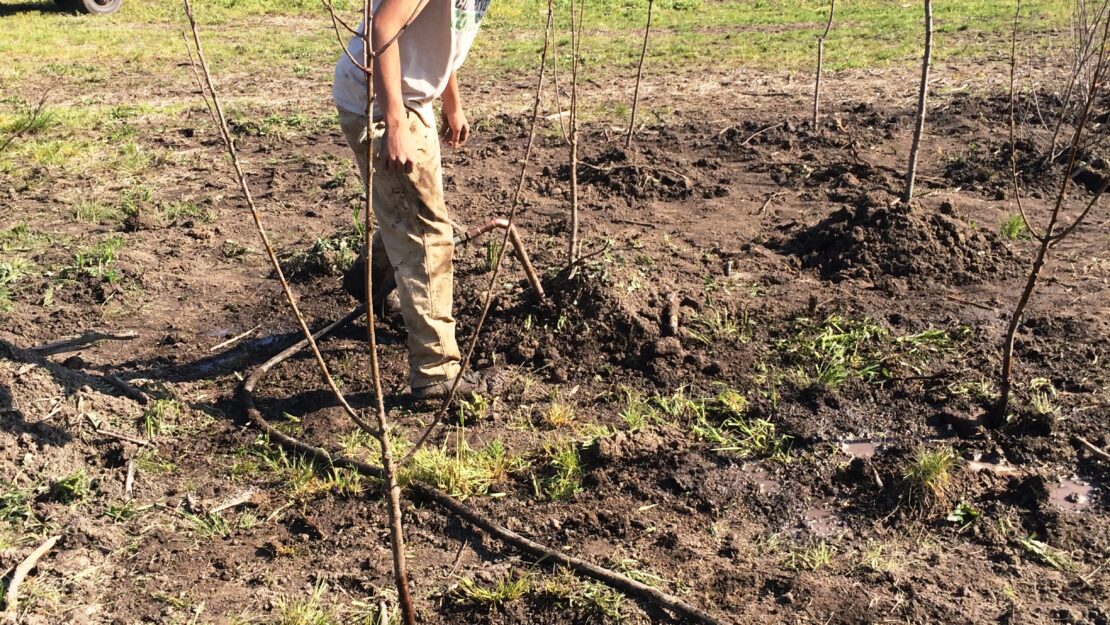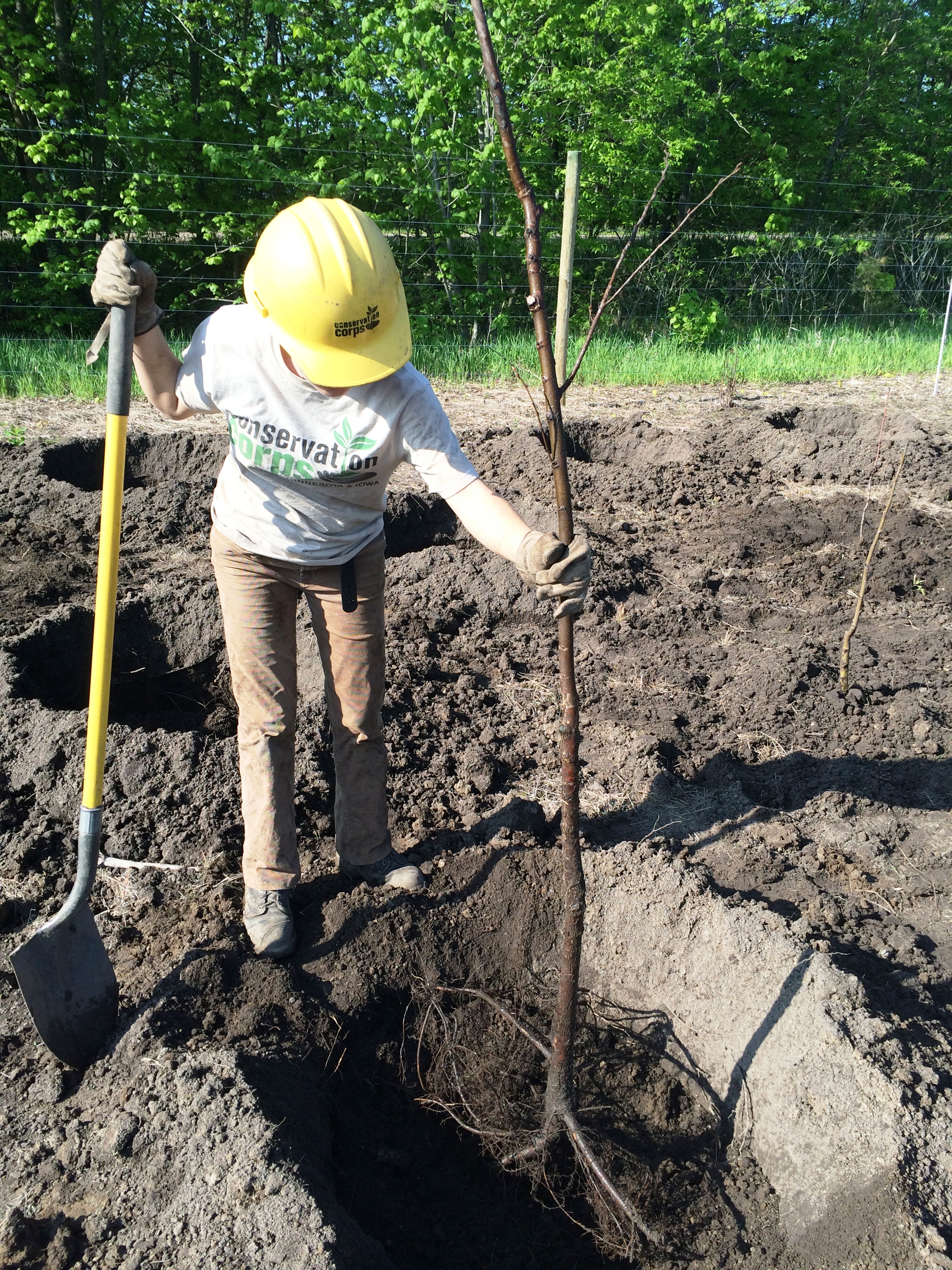“Tree Train!”


Photo credit: Kyle Knutsen
By: Angela Mohar
After what seemed to be a never-ending winter with dangerously cold temperatures and lots of snow, any sign of spring was more than welcome. Like many people, I associate spring with trees budding out and showing off their leaves. At the nursery this sign of spring signals the start of spring harvest and planting season.
Before anything can go in the ground, additional large bare root trees and shrubs have to be harvested to supplement those harvested in the past fall harvest season. The process is made very efficient through the use of one of my favorite pieces of machinery: the crawler. It has the ability to prune roots of trees and shrubs and shake off the excess dirt while two people stand on the platforms and hoist them out of the soil to pass onto the runners going back and forth to the delivery truck. In under an hour, we are able to harvest over 200 trees or shrubs without the use of shovels. After a truckload is harvested, the trees and shrubs get bundled in groups of five or three respectively in the cold storage building where they will remain dormant until it’s time to plant.


This spring’s planting season focused on two planting sites: a trail corridor in Maple Grove and an addition to an existing planting site at Lake Rebecca Park Reserve. The latter site is part of a grant and has had invasive tree species removed to make room for native tree and shrub species. Between all of the planting sites this spring, I guesstimate that we planted around 5,000 large bare root trees and shrubs. While what we accomplished is just a small portion of the overall reforestation project, it will hopefully help make way for a better and more beautiful forest.
So how does this planting thing go? First, we randomize and load up bundles of trees and shrubs from cold storage, then travel to the planting site. Once there, we set up the watering system (if not left from the previous day), and a skid steer with an auger attached creates hundreds of holes in the ground to be filled with a tree or shrub. Trees and shrubs have to be carefully “set” in the holes so that the roots aren’t too far below the ground level, then the rest of the soil must be “scraped” in the volcano-like hill around the plant. Watering each plant comes last. It is a very important part, but also the messiest (and sometimes most humorous) part of the planting process. I, for one, have fallen in plenty of muddy holes and will surely fall in more during the next planting season. Although sometimes challenging, planting was made more efficient and more fun by getting to work with a few other CCM crews over the season. Hopefully they found the work as rewarding and fun as I did.